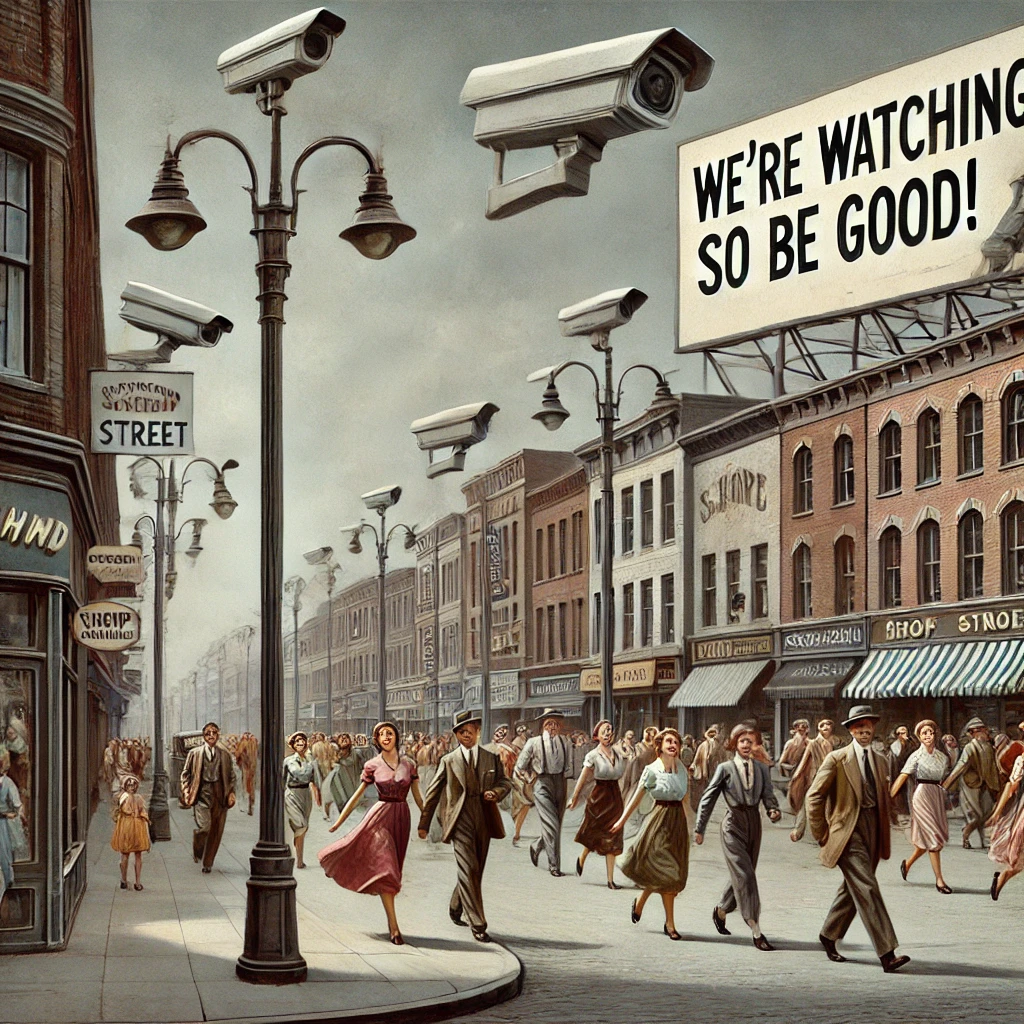
By Asha Lang
In our public spaces—be it the shopping mall, the morning bus, or the glowing screen glued to our palms—we live in a world bedecked with cameras, and researchers have now confirmed what we’ve all suspected: being watched changes us.
Not just in the obvious ways—minding our manners, picking up our litter—but in deeper, more unconscious places. According to a recent study in Neuroscience of Consciousness, called ‘Big brother: the effects of surveillance on fundamental aspects of social vision’ all that scrutiny doesn’t just nudge our behaviour; it reshapes the very way we see, accelerating our ability to detect faces and altering a core mechanism of human social cognition.
This peculiar effect of surveillance is more than a quirk of psychology. It speaks to a world where our perception is no longer just ours but quietly co-opted by the watchful eye of modern technology.
Creepy Surveillance
Across the world, surveillance creeps in like an uninvited dinner guest, planting itself firmly and rearranging the furniture of our behaviour. A recent study published in Neuroscience of Consciousness tells us what many of us already suspected: being watched changes us. It tweaks our actions, adjusts our thinking, and, most unsettlingly, sharpens our perception of the watchers themselves.
The study reveals that surveillance has a strange way of making us, dare I say, more civil. Under the watchful gaze of a camera, people litter less, share more, and generally behave as though auditioning for the lead in Good Citizen: The Musical. It seems that in the age of surveillance, even our senses are being given a nudge, whether we like it or not. Researchers have found that CCTV cameras do more than just make us behave; they quietly tweak the gears of our perception. Participants who believed they were being watched managed to spot faces faster than their unmonitored counterparts, as though the presence of a camera whispered, "Hurry up, darling, someone’s noticing."
To prove this wasn’t just about pleasing the researchers or playing the part of a good subject, the study employed continuous flash suppression, a method so scientific it feels like it should come with a lab coat of its own. An independent control experiment further confirmed the results were real and not simply the product of people trying to be teacher’s pet.
The conclusion is as unsettling as it is fascinating: being watched doesn’t merely polish our manners—it reaches into the depths of our cognitive processes, shaping the way we perceive the world. And while the cameras may be silent, their influence is anything but, raising urgent questions about what this all means for public mental health and the delicate dance of human interaction.
But let us not linger in the laboratory. Real life has a flair for making experiments look tame.
The Australian government is rolling out a social media ban trial that’s likely to feature facial recognition for identity checks. The goal, they say, is to stop anyone from posting, scrolling, or liking until a machine has stared deep into their soul and taken its best guess at their age. Just another drop in the ever-filling bucket of surveillance—because, clearly, nothing says “safety” like a camera with an opinion.
In the public square, this popular policy is hailed as progress. But in the quieter corners, where parents worry and children grow wary of every lens, questions arise.
Critics point out the obvious: once a society grows accustomed to constant surveillance, the line between safety and suppression becomes distressingly thin. And those critics aren’t wrong. There’s a reason Orwell’s 1984 wasn’t subtitled A User’s Guide.
A Mirror, Darkly
What’s most remarkable about all this watching, though, is how little it bothers most people. The researchers noted that participants felt only mildly monitored—even when cameras stared them down like a cat eyeing a canary. It seems we’re not just being surveilled; we’re acclimating to it.
And so, we arrive at the dance between watcher and watched. Surveillance may insist we be on our best behavior, but it rarely asks if that behavior is authentic. After all, when the music stops and the cameras click off, who’s left on the floor? Is it the same person, or just a practiced performance?
Smile, dear reader. You’re on camera.
